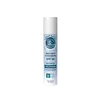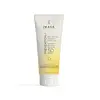Reef Safe Zinc Face Sunscreen SPF 50 Versus IMAGE skincare Prevention+ Daily Ultimate Protection Moisturizer SPF 50
What's inside
What's inside
 Key Ingredients
Key Ingredients

 Benefits
Benefits

 Concerns
Concerns

 Ingredients Side-by-side
Ingredients Side-by-side

Zinc Oxide 25%
Cosmetic ColorantHelianthus Annuus Seed Oil
EmollientWater
Skin ConditioningEuphorbia Cerifera Wax
Polyglyceryl-3 Polyricinoleate
EmulsifyingPotassium Cetyl Phosphate
EmulsifyingIsostearic Acid
CleansingGlycerin
HumectantPolyhydroxystearic Acid
EmulsifyingSodium Chloride
MaskingMaltodextrin
AbsorbentXanthan Gum
EmulsifyingSimmondsia Chinensis Seed Oil
EmollientCalendula Officinalis Extract
Skin ConditioningHippophae Rhamnoides Oil
EmollientSodium Hyaluronate
HumectantBisabolol
MaskingTerminalia Ferdinandiana Fruit Extract
AntioxidantSodium Ascorbate
AntioxidantTocopherol
AntioxidantCoriandrum Sativum Oil
MaskingAhnfeltia Plicata Extract
Skin ConditioningCitrus Grandis Seed Extract
AstringentCI 77491
Cosmetic ColorantCI 77492
Cosmetic ColorantCI 77499
Cosmetic ColorantZinc Oxide 25%, Helianthus Annuus Seed Oil, Water, Euphorbia Cerifera Wax, Polyglyceryl-3 Polyricinoleate, Potassium Cetyl Phosphate, Isostearic Acid, Glycerin, Polyhydroxystearic Acid, Sodium Chloride, Maltodextrin, Xanthan Gum, Simmondsia Chinensis Seed Oil, Calendula Officinalis Extract, Hippophae Rhamnoides Oil, Sodium Hyaluronate, Bisabolol, Terminalia Ferdinandiana Fruit Extract, Sodium Ascorbate, Tocopherol, Coriandrum Sativum Oil, Ahnfeltia Plicata Extract, Citrus Grandis Seed Extract, CI 77491, CI 77492, CI 77499
Water
Skin ConditioningCaprylic/Capric Triglyceride
MaskingGlycerin
HumectantCyclopentasiloxane
EmollientCetyl PEG/PPG-10/1 Dimethicone
EmulsifyingThermus Thermophillus Ferment
Skin ConditioningPolyacrylate-13
Cetearyl Ethylhexanoate
EmollientPhenoxyethanol
PreservativePolyisobutene
Polyglyceryl-6 Polyricinoleate
EmulsifyingLecithin
EmollientIsostearic Acid
CleansingPolyglyceryl-3 Polyricinoleate
EmulsifyingPolyhydroxystearic Acid
EmulsifyingSodium Chloride
MaskingCetearyl Dimethicone
EmollientMarrubium Vulgare Extract
Skin ConditioningHelianthus Annuus Seed Oil
EmollientXanthan Gum
EmulsifyingPolyglyceryl-2 Isostearate
EmulsifyingDisteardimonium Hectorite
StabilisingPolysorbate 20
EmulsifyingCitrus Aurantium Dulcis Peel Oil
MaskingLimonene
PerfumingSorbitan Isostearate
EmulsifyingEthylhexylglycerin
Skin ConditioningPanthenol
Skin ConditioningCitrus Nobilis Peel Oil
MaskingDisodium EDTA
Sodium Hyaluronate
HumectantMelanin
Skin ProtectingErythritol
HumectantCitric Acid
BufferingVanilla Planifolia Fruit Extract
Skin ConditioningGlucose
HumectantPotassium Sorbate
PreservativeHydrolyzed Pea Protein
EmollientTocopherol
AntioxidantPEG-8/Smdi Copolymer
Tetrahexyldecyl Ascorbate
AntioxidantTocopheryl Acetate
AntioxidantBarosma Betulina Leaf Oil
PerfumingSodium Benzoate
MaskingHomarine Hcl
Skin ConditioningPentaerythrityl Tetra-Di-T-Butyl Hydroxyhydrocinnamate
AntioxidantSodium Succinate
BufferingMalus Domestica Fruit Cell Culture Extract
Skin ConditioningArabidopsis Thaliana Extract
AntioxidantMicrococcus Lysate
Skin ConditioningPlankton Extract
Skin ConditioningErgothioneine
AntioxidantWater, Caprylic/Capric Triglyceride, Glycerin, Cyclopentasiloxane, Cetyl PEG/PPG-10/1 Dimethicone, Thermus Thermophillus Ferment, Polyacrylate-13, Cetearyl Ethylhexanoate, Phenoxyethanol, Polyisobutene, Polyglyceryl-6 Polyricinoleate, Lecithin, Isostearic Acid, Polyglyceryl-3 Polyricinoleate, Polyhydroxystearic Acid, Sodium Chloride, Cetearyl Dimethicone, Marrubium Vulgare Extract, Helianthus Annuus Seed Oil, Xanthan Gum, Polyglyceryl-2 Isostearate, Disteardimonium Hectorite, Polysorbate 20, Citrus Aurantium Dulcis Peel Oil, Limonene, Sorbitan Isostearate, Ethylhexylglycerin, Panthenol, Citrus Nobilis Peel Oil, Disodium EDTA, Sodium Hyaluronate, Melanin, Erythritol, Citric Acid, Vanilla Planifolia Fruit Extract, Glucose, Potassium Sorbate, Hydrolyzed Pea Protein, Tocopherol, PEG-8/Smdi Copolymer, Tetrahexyldecyl Ascorbate, Tocopheryl Acetate, Barosma Betulina Leaf Oil, Sodium Benzoate, Homarine Hcl, Pentaerythrityl Tetra-Di-T-Butyl Hydroxyhydrocinnamate, Sodium Succinate, Malus Domestica Fruit Cell Culture Extract, Arabidopsis Thaliana Extract, Micrococcus Lysate, Plankton Extract, Ergothioneine
Ingredients Explained
These ingredients are found in both products.
Ingredients higher up in an ingredient list are typically present in a larger amount.
Glycerin is already naturally found in your skin. It helps moisturize and protect your skin.
A study from 2016 found glycerin to be more effective as a humectant than AHAs and hyaluronic acid.
As a humectant, it helps the skin stay hydrated by pulling moisture to your skin. The low molecular weight of glycerin allows it to pull moisture into the deeper layers of your skin.
Hydrated skin improves your skin barrier; Your skin barrier helps protect against irritants and bacteria.
Glycerin has also been found to have antimicrobial and antiviral properties. Due to these properties, glycerin is often used in wound and burn treatments.
In cosmetics, glycerin is usually derived from plants such as soybean or palm. However, it can also be sourced from animals, such as tallow or animal fat.
This ingredient is organic, colorless, odorless, and non-toxic.
Glycerin is the name for this ingredient in American English. British English uses Glycerol/Glycerine.
Learn more about GlycerinHelianthus Annuus Seed Oil is the oil derived from the seeds of a Sunflower. Sunflower seed oil is non-fragrant. It is an emollient, meaning it helps to soften the skin.
Sunflower seed oil contains many fatty acids. The fatty acids found in sunflower seeds include (from highest amount to least): linoleic acid, myristic acid, palmitic acid, stearic acid, arachidic acid, oleic acid, and linolenic acid.
These fatty acids help the skin create ceramides. Ceramides play a role in repairing the skin barrier.
Helianthus Annuus Seed Oil helps moisturize the skin. This in turn helps the skin look more rejuvenated and smoother.
Sunflowers are rich in vitamin E.
Historians believe Indigenous cultures of North America domesticated sunflowers before corn. Thus they relied on sunflower oil for a variety of uses. One such use is moisturizing skin and hair.
Sunflower seed oil may not be fungal acne safe. We recommend speaking with a professional if you have any concerns.
Learn more about Helianthus Annuus Seed OilIsostearic acid is a saturated fatty acid. Its structure makes it a great surfactant.
Surfactants help decrease the surface tension between two liquids. This property also makes it an effective emulsifier. Emulsifiers help prevent waters and oils from separating in a product.
Isostearic Acid is created from oleic acid.
This ingredient may not be Malassezia folliculitis, or fungal-acne safe.
Learn more about Isostearic AcidThis ingredient is an emulsifier. It is created from Polyglycerin-3 and Ricinoleic Acid.
As an emulsifier, it prevents waters and oils from separating. According to a manufacturer this ingredient is fully biodegradable.
This ingredient may not be safe for Malassezia folliculitis due to its Ricinoleic Acid base. Ricinoleic Acid is a fatty acid derived from castor oil.
Learn more about Polyglyceryl-3 PolyricinoleatePolyhydroxystearic Acid is a soft wax made from castor oil.
It is is a texture thickener, emulsifier, and film-former. Emulsifiers prevent ingredients from separating, such as oils and waters.
Polyhydroxystearic Acid may not be fungal acne safe.
Learn more about Polyhydroxystearic AcidChances are, you eat sodium chloride every day. Sodium Chloride is also known as table salt.
This ingredient has many purposes in skincare: thickener, emulsifier, and exfoliator.
You'll most likely find this ingredient in cleansers where it is used to create a gel-like texture. As an emulsifier, it also prevents ingredients from separating.
There is much debate on whether this ingredient is comedogenic. The short answer - comedogenic ratings don't tell the whole story. Learn more about comegodenic ratings here.
The concensus about this ingredient causing acne seems to be divided. Research is needed to understand if this ingredient does cause acne.
Scrubs may use salt as the primary exfoliating ingredient.
Learn more about Sodium ChlorideSodium Hyaluronate is hyaluronic acid's salt form. It is commonly derived from the sodium salt of hyaluronic acid.
Like hyaluronic acid, it is great at holding water and acts as a humectant. This makes it a great skin hydrating ingredient.
Sodium Hyaluronate is naturally occurring in our bodies and is mostly found in eye fluid and joints.
These are some other common types of Hyaluronic Acid:
Learn more about Sodium HyaluronateTocopherol (also known as Vitamin E) is a common antioxidant used to help protect the skin from free-radicals and strengthen the skin barrier. It's also fat soluble - this means our skin is great at absorbing it.
Vitamin E also helps keep your natural skin lipids healthy. Your lipid skin barrier naturally consists of lipids, ceramides, and fatty acids. Vitamin E offers extra protection for your skin’s lipid barrier, keeping your skin healthy and nourished.
Another benefit is a bit of UV protection. Vitamin E helps reduce the damage caused by UVB rays. (It should not replace your sunscreen). Combining it with Vitamin C can decrease sunburned cells and hyperpigmentation after UV exposure.
You might have noticed Vitamin E + C often paired together. This is because it is great at stabilizing Vitamin C. Using the two together helps increase the effectiveness of both ingredients.
There are often claims that Vitamin E can reduce/prevent scarring, but these claims haven't been confirmed by scientific research.
Learn more about TocopherolWater. It's the most common cosmetic ingredient of all. You'll usually see it at the top of ingredient lists, meaning that it makes up the largest part of the product.
So why is it so popular? Water most often acts as a solvent - this means that it helps dissolve other ingredients into the formulation.
You'll also recognize water as that liquid we all need to stay alive. If you see this, drink a glass of water. Stay hydrated!
Learn more about WaterXanthan gum is used as a stabilizer and thickener within cosmetic products. It helps give products a sticky, thick feeling - preventing them from being too runny.
On the technical side of things, xanthan gum is a polysaccharide - a combination consisting of multiple sugar molecules bonded together.
Xanthan gum is a pretty common and great ingredient. It is a natural, non-toxic, non-irritating ingredient that is also commonly used in food products.
Learn more about Xanthan Gum